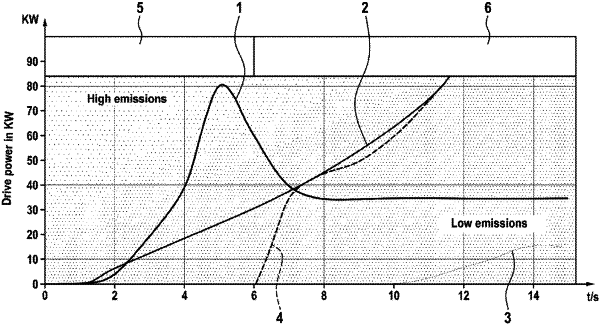| CPC F02D 41/0255 (2013.01) [B60W 50/10 (2013.01); B60W 50/12 (2013.01); F01N 3/2006 (2013.01); B60W 2710/0677 (2013.01); F01N 3/2013 (2013.01); F01N 2900/08 (2013.01); F01N 2900/1602 (2013.01)] | 14 Claims |

|
1. A method for operating an internal combustion engine of a drivetrain of a vehicle during launching, wherein the vehicle has an exhaust-gas after treatment system for purifying exhaust gas produced by the internal combustion engine, said method comprising:
after a starting operation of the internal combustion engine has commenced, operating the drivetrain in a first operating state, wherein, in the first operating state, the internal combustion engine is operated at idle, the exhaust-gas after treatment system is heated by the internal combustion engine, and a launch prohibition is active to prevent launching using the internal combustion engine; and
after a predefined state of the exhaust-gas after treatment system has been attained, operating the drivetrain in a second operating state, wherein the launch prohibition is inactive in the second operating state, such that launching using the internal combustion engine is possible in the second operating state,
wherein, in the second operating state, the method comprises limiting a maximum power of the internal combustion engine that can be demanded by the driver to a value below a maximum possible power of the internal combustion engine, wherein the maximum power that can be demanded by the driver is dependent on a state of the exhaust-gas after treatment system, and, the maximum possible power of the internal combustion engine can be demanded by the driver after a further predefined state of the exhaust-gas after treatment system has been attained such that further heating of the exhaust gas after treatment system can take place.
|